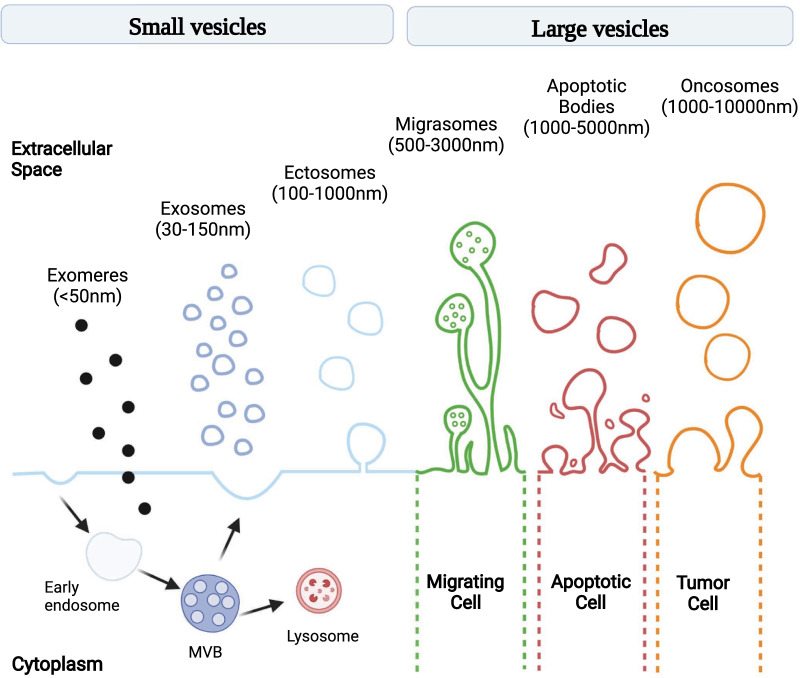Fig. 1.
EVs Classification. Schematic illustration of EVs subtypes according to their different size and genesis model. Exomeres represent a population of non-membranous nanoparticles smaller than 50 nm with distinct proteomic signature (e.g. HSP90AB1, IDH1) and biodistribution. Exosomes are the smallest EV sub-population originally generated from an intracellular vesicle trafficking system, which involves biogenesis of early endosomes and multivesicular bodies (MVBs) following their fusion with the plasma membrane. Ectosomes are mid-sized EVs (100–1000 nm) released from cells via the outward budding and fission of the plasma membrane, transferring bioactive cargoes. Migrasomes (up to 3000 nm) were found to be released from the tip of retraction fibers, that cells leave behind as they migrate. They have been described as pomegranate-like structures, large vesicles encapsulating numerous smaller vesicles ranging 50–100 nm and their function remains to be better elucidated in upcoming investigations. Apoptotic bodies (1000–5000 nm) are irregularly shaped, nucleic acid-containing cell fragments released during the terminal stage of apoptosis. ABs are normally phagocytosed to maintain homeostasis but have also been reported to facilitate horizontal transfer of oncogenes in tumors. Oncosomes are large-sized EV subpopulations (1000–10000 nm) released from large protrusions of the plasma membrane during amoeboid migration of metastatic prostate cancer cells. Oncosomes have been reported to transfer functional miRNAs, mRNAs and proteins to promote cancer metastasis

